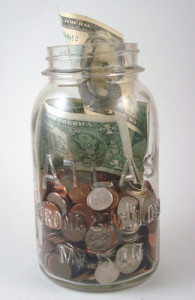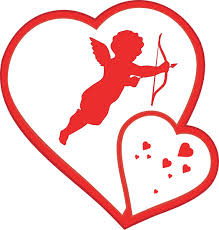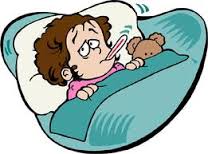
Spring is in full swing: The buds on the trees have opened, birds are chirping, and children are eager to go outside and get muddy.
Unless, that is, they are like the fourth-grader author Richard Louv spoke to for his book “Last Child in the Woods.”
“I like to play indoors better ’cause that’s where all the electrical outlets are,” the child told Louv.
According to extensive research Louv and others have conducted since the 1980s, spending time in nature has tremendous benefits, including improved concentration, better motor coordination, improved overall cognitive functioning and a greater ability to engage in creative play. It has also been said to help with the symptoms of mental illness.
To that end, in 2008, the American Academy of Pediatrics issued a statement saying that 60 minutes of daily unstructured free play is essential to children’s physical and mental health.
 (Tyler Parker/for The Washington Post)
(Tyler Parker/for The Washington Post)Yet Erika Christakis, an early childhood educator at the Yale Child Study Center and author of “The Importance of Being Little: What Preschoolers Really Need From Grownups,” cites an alarming trend. A 2011 study published in the Journal of Pediatrics revealed that, on weekdays, the average preschooler spends more than four hours in front of a screen.
For older children, the numbers are even worse. According to a 2015 overview of teens, social media and technology from the Pew Research Center, 92 percent of teens report going online daily — including 24 percent who say they are online “almost constantly.”
“Active learning (and especially outdoor play in nature) is essential to healthy human development,” Christakis said in an email.
“But needing play and knowing how to play productively can be two different things, especially in today’s world where so few children have long uninterrupted stretches of time with mixed-age groups, particularly outdoors,” she added. “We often err in assuming that natural behaviors like play unfold effortlessly without cultivation and support, and that’s simply not true.”
The feeling of the wind on your face can be a jumping-off point for a chat about science and the movement of air. The smell of impending rain is pleasant, and a way to teach your child about weather. The unforgettable taste of a ripe strawberry, fresh from the garden, can spark a conversation about seasonal eating. And the sound of various songbirds can teach your child about the diversity of the natural world.
 (Tyler Parker/for The Washington Post)
(Tyler Parker/for The Washington Post)“We’ve really lost our understanding that we are part of nature and connected to nature,” said Kacie Flegal, a chiropractor in Ashland, Ore., who specializes in pediatrics. “To become stronger adults, kids need to be outside and allow their bodies to do what they’ve been designed for from the beginning.
“We don’t want kids to get sick, of course,” she added. “But being outside, being in the elements and the dirt and being exposed to things, allows the immune system to develop so kids are stronger as they get older.”
So how do we get them out there, particularly those who are used to being inside, plugged in or shuffled from one structured, adult-led activity to the next? Here are 10 ways to get children excited about spending more time outside and how to make it fun for everyone.
Simply be in nature
Parents need to greatly increase the amount of time their children spend playing outdoors and with free objects found in nature, Christakis says. What’s more, she suggests that we leave them alone while they do it. Parents who are not yet comfortable letting their children out of sight should at least refrain from directing all outdoor time, she says; instead, try to give kids the time and space to explore and create their own adventures.
Sleep outside
Before mosquitoes make their way onto the scene, try sleeping in the open air. Or take a tent out into the back yard and bring only a flashlight and sleeping bag. Use the time to listen to the world around you and enjoy the fresh air.Researchers at the University of Colorado at Boulder found that sleeping outside, particularly away from artificial light, helps to reset circadian rhythms — the internal clock that regulates our bodies — and can reduce feelings of grogginess during the day.
Inspire by being inspired
One way to prioritize the natural world is to show great awe and enthusiasm for it. “The most effective way to connect our children to nature is to connect ourselves to nature,” Louv said in an email. Children take cues from their parents, so when they see their parent stop, bend down and observe a small caterpillar with interest, this thing suddenly becomes more interesting to them. Embrace being a curious human and be open to learning new things. Encourage your child to ask questions about nature, even if you don’t know the answers.
Check out “The Cloudspotter’s Guide” from your local library, pack up a comfortable blanket to spread in a field and spend the afternoon identifying cirrostratus and cumulonimbus clouds. Discuss weather events and the clouds that precede them. Or encourage children to use their imagination to tell you what they see in the clouds. If all else fails, just enjoy the view. At night, look up stargazing websites that can direct you, based on what month it is, to the constellations, then go out and try to spot them. Print out a “moon journal” page and chart the phases of the moon.
Plant something
From butterfly gardens to back-patio tomatoes, there are opportunities to grow something almost anywhere. Grow vegetables and fruit from seeds in your back yard or in a shared community space. Allow your child to help prepare the soil, plant the seeds, water and weed. Start with plants that mature quickly, such as pole beans, and note their daily growth. This is the perfect opportunity to discuss where food comes from while spending time in nature. The bonus? A garden takes plenty of work, so there will be daily opportunities to be outside to enjoy it.
Make a fairy house
Adding a little magic and mystery can help children become more engaged with their natural surroundings. Encourage imaginative play through building tiny outdoor houses for “fairies” from various natural materials such as bark, sticks, stones, flowers, grasses, acorns and pine cones. Join your child and think of the endless possibilities: a pebble path, a fence made of sticks, a walnut-shell bathtub, even a little leaf hammock.
Explore a pond or stream
Kids are naturally drawn to water and will spend hours being near or in it. Plan to explore a natural body of water nearby. Bring a net, a jar and a shovel to dig for creatures in the mud, and encourage your child to catch small creatures to observe. Your child will find joy discovering the minnows, salamanders, crayfish, snails and insects that are abundant in these habitats.
Start a collection
Keep a nature table (either indoors or out) with jars or compartments for found items. Just be sure to check the rules and regulations of the area you are exploring to make sure it is okay to collect something. Be sure to have a conversation with your child about the concept of “Leave no trace” and the difference between picking up a dead branch from the ground, for example, and breaking one off a tree.
Take a hike
Go for a walk in the woods with your child. To extend attention spans during longer hikes, bring a small magnifying glass and a bug jar. Look for creatures along the way. Take your time. Try to spot 10 different insects, mammals, animal tracks or signs of animals hidden away.
Go barefoot
Walking barefoot can help your child develop a natural, healthy gait and optimize brain development, Flegal said. She recommends letting kids walk around without shoes to help them develop good balance and an awareness of where their body is in space. It is also a joy for the senses, whether on cool grass, warm sand or squishy mud.
“There are so many sensory perceptors in the feet that feed information into your brain,” Flegal said. “To get the best development of that system, it’s important to get different experiences through your feet.”
The Washington Post, May 3, 2016
 1. Be on time to the bus stop so that you and your host kids get there safely.
1. Be on time to the bus stop so that you and your host kids get there safely.

 Miscellaneous Expenses
Miscellaneous Expenses






![halloween-pumpkin-clip-art-free[1]](https://blogs.aupairinamerica.com/fcn/wp-content/uploads/sites/23/2014/10/halloween-pumpkin-clip-art-free1-270x300.jpg)